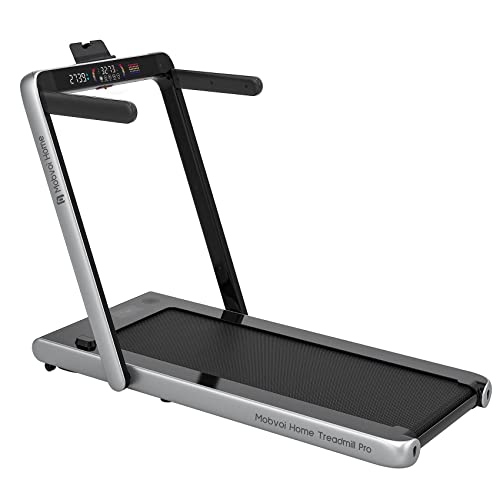10 Misconceptions Your Boss Holds Concerning Non Electric Treadmill
The Rise of Non-Electric Treadmills: An Eco-Friendly Choice for Fitness Enthusiasts
In the last few years, the fitness market has witnessed a rise in demand for non-electric treadmills. As individuals end up being more conscious of their carbon footprint and look for sustainable choices for their exercise regimens, non-electric treadmills have actually become an appealing option to their motorized equivalents. This article looks into the benefits, types, and features of non-electric treadmills, culminating in a comprehensive FAQ section to resolve typical questions.
What is a Non-Electric Treadmill?
A non-electric treadmill, typically described as a manual treadmill, operates without a source of power. Rather of being propelled mechanically, the user's body weight and motion drive the belt. This style creates an unique experience, frequently needing more effort however providing numerous advantages in terms of fitness and sustainability.
Advantages of Using Non-Electric Treadmills
Sustainability: Non-electric treadmills eliminate the requirement for electricity, making them environmentally friendly. www.hometreadmills.uk in energy intake can significantly contribute to lower electricity expenses and a decreased carbon footprint.
Boosted Workout Efficiency: Users must actively engage their muscles to keep speed, which can lead to more efficient workouts. This increased effort can translate to a higher calorie burn compared to electric models.
Versatility: Many non-electric treadmills can be adapted to offer various incline levels. This feature allows users to tailor their exercises, targeting various muscle groups and difficult themselves in new ways.
Durability: Generally, non-electric treadmills have less mechanical components than powered variations, leading to lower upkeep expenses and increased durability.
Compact Design: Many non-electric treadmills are designed with mobility in mind, making them simple to move and keep, perfect for those with minimal area.
Kinds Of Non-Electric Treadmills
Non-electric treadmills can be categorized into a number of types based upon design and functions:
Type
Description
Pros
Cons
Woodway Treadmills
Understood for their curved shape, offering a distinct running experience.
Minimizes effect on joints, suitable for runners.
Usually more pricey.
Flat Non-Electric Treadmills
Fundamental style offering uncomplicated functionality.
Budget friendly and easy to utilize.
Might not have advanced functions.
Incline Manual Treadmills
Permits users to set an incline for included difficulty.
Flexible and adjustable exercises.
Can be physically demanding.
Folding Non-Electric Treadmills
Space-saving styles that can be quickly stored away.
Practical for small home.
Might be less tough than non-folding choices.
Key Features to Consider
When selecting a non-electric treadmill, customers ought to prioritize the following features:
Build Quality: Ensure that the frame is durable and made from resilient materials to endure daily use.
Running Surface: A broader and longer running surface area provides a more comfy experience, especially for taller people.
Incline Options: Adjustable incline settings can boost workout range and intensity.
Weight Capacity: Check the weight limitation to guarantee the treadmill accommodates all designated users.
Mobility: If area is an issue, try to find a light-weight treadmill with wheels for easy movement.
Warranty: A great warranty shows the manufacturer's self-confidence in their item, providing peace of mind to consumers.
Non-Electric Treadmill vs. Electric Treadmill
Feature
Non-Electric Treadmill
Electric Treadmill
Power Source
Manual (no electricity required)
Requires electricity
Upkeep
Very little, often needs no repairs
May require mechanical maintenance
Calorie Burning
Typically higher due to user effort
Varies, typically lower for the same speed
Customizability
Restricted to manual changes
Offers different pre-set programs
Expense
Normally more economical
Can be more expensive due to functions
Frequently Asked Questions (FAQ)
1. Are non-electric treadmills suitable for beginners?
Yes, non-electric treadmills can be ideal for novices, although they might require a steeper learning curve for those not familiar with manual treadmills. A mild start on a low incline can ease novices into their fitness journey.
2. How do I maintain a non-electric treadmill?
Maintenance is minimal. Regular cleaning and checking for any wear on the belt or deck can assist lengthen the life of the treadmill. Constantly refer to the maker's guidelines for comprehensive upkeep guidelines.
3. Can I operate on a non-electric treadmill?
Absolutely! Lots of non-electric treadmills are developed to accommodate running. However, users ought to start by walking and slowly increase their rate and incline as they build strength and endurance.
4. How do non-electric treadmills deal with weight?
Most non-electric treadmills have a weight capability comparable to electric designs. Nevertheless, it is vital to examine the specifications to ensure proper support for the user's weight.
5. Exist any disadvantages to using a non-electric treadmill?
Some users might find that non-electric treadmills need more effort, perhaps making them more tiring. Furthermore, they may lack innovative features discovered in electric designs, such as built-in workouts or heart rate screens.
As more individuals seek environment-friendly and effective physical fitness choices, non-electric treadmills have begun to catch the attention of exercise enthusiasts. With their blend of sustainability, effectiveness, and durability, these manual devices can raise any exercise routine. By understanding their benefits, types, and vital features, customers can make informed choices in selecting the ideal treadmill for their requirements, eventually supporting a healthier lifestyle while adding to a greener planet.
